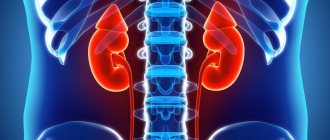BLOOD, liquid tissue circulating in the closed circulatory system of animals and humans; ensures the vital functions of all organs and tissues of the body and their performance of various functions. physiological functions; during ontogenesis it is formed from the embryonic connective tissue. tissue - mesenchyme. The science of blood formation and hematopoiesis is called hematology. The functions of oxygen are diverse: it transfers oxygen (O2) from the lungs to the tissues and carbon dioxide (CO2) from the tissues to the lungs (respiratory function), and transports nutrients. substances to the place of their consumption (trophic function), and metabolic products to the excretory organs (excretory function), delivers hormones, enzymes, mediators and other biologically active substances from the place of their production to the places of their active action (mediator function). Along with lymph and tissue fluid, K. is involved in maintaining the constancy of internal fluid. body environment (homeostasis). The heat exchange of K., located in the skin vessels of warm-blooded animals, with the environment helps maintain optimal body temperature (thermoregulatory function). It plays an important role in protecting the body from foreign substances, pathogenic microorganisms, aging and malignancies. cells (see Immunity, Phagocytosis). The protective function also includes blood clotting, due to which, with any injury, a blood clot is formed that prevents bleeding.
Only in a few low-active animals can oxygen transport a sufficient amount of O2 in a dissolved state without the participation of respiratory pigments. With the appearance of the latter during evolution (including hemoglobins, chlorocruorin and hemoerythrin, containing iron ions), the ability of K. to bind O2 and release it to tissues increases sharply. The most widespread red pigments in living nature (hemoglobins) are found in the erythrocytes of a number of invertebrates and almost all vertebrates. In invertebrates, the ratio of the mass of fluid that performs the functions of blood to body weight is much higher (up to 20–30% of body weight) than in vertebrates. The decrease in blood volume in the latter (2–8% of body weight) is explained by the closed circulatory system and the presence of respiratory pigments that effectively bind O2.
In mammals and humans, K. is a homogeneous red liquid; O2-saturated arterial blood is scarlet, venous blood is dark cherry in color. K.'s mass in adults is 6–8% of body weight, in newborns – up to 10%. The volume of human circulating blood increases from 200–350 ml at birth to 3.9 liters in women and up to 5.2 liters in men (on average). An increase in blood volume (hypervolemia) can be a consequence of both an increase in the number of blood cells and an increase in plasma volume (for example, after taking a large amount of liquid), a decrease (hypovolemia) - after blood loss, increased sweating, profuse vomiting, and frequent diarrhea. The stabilization of blood volume is facilitated by the secretion of the glands of the stomach (approx. 2 l/day), kidneys, etc. Approx. 80% of all K. circulates through the blood vessels, making a full revolution in the body of an adult in 50 s. A smaller part (approx. 20%) moves slowly, lingering in the vessels of the skin, liver, and spleen, called the K depot. In the capillaries, through the walls of which K plasma leaks, the speed of K movement does not exceed 3 mm/s.
Blood composition
Blood consists of 4 main components:
- red blood cells - red blood cells that transport oxygen from the lungs to the human organs;
- white blood cells - leukocytes responsible for fighting infections that attack the body;
- blood platelets - platelets that ensure blood clotting, thereby protecting the body from fatal blood loss due to injuries and cuts.
All these cells are suspended in blood plasma, which not only serves as a transport medium for blood cells, moving them throughout the human body, but also contains proteins and salts necessary for the body.
Hemostasis
The complex of body reactions aimed at stopping bleeding and maintaining circulating blood in a liquid state (hemostasis) involves the vascular endothelium, platelets (vascular-platelet hemostasis), and the blood clotting system (coagulation hemostasis). Impaired hemostasis leads to either bleeding or thrombosis. Normally, K.'s coagulation system is balanced by K.'s anticoagulant system, which includes natural. anticoagulants (heparin, antithrombins, proteins C, S, etc.), fibrinolytic. system (plasmin, urokinase and other plasminogen activators), as well as prostacyclin, salicylates and other disaggregants that reduce platelet adhesion. The anticoagulation system prevents thrombosis of intact vessels, limits the spread of the blood clot and promotes its dissolution after restoration of the integrity of the vessel. Age-related depression of fibrinolysis begins at 45–50 years of age, and is intensified by hypokinesia (limited movement) characteristic of older people.
Red blood cells - erythrocytes
Red blood cells perform one of the important functions of blood. A drop of blood contains millions of red blood cells, which constantly circulate through the blood vessels, delivering oxygen to the organs and removing carbon dioxide formed during cellular respiration.
Red blood cells are called red blood cells because they contain the protein hemoglobin, which is bright red in color. It is hemoglobin that carries oxygen and carbon dioxide. As blood passes through the lungs, oxygen molecules attach to hemoglobin, which delivers it to every cell in our body. Freed from oxygen, hemoglobin attaches carbon dioxide molecules to itself. In the lungs, carbon dioxide is released and removed from the body through breathing.
The average lifespan of a red blood cell is 120 days. The bone marrow constantly produces blood cells, replenishing their natural loss.
Blood vessels
Blood vessels have different shapes, structures and volumes, depending on their role in the body.
1. Arteries are the strongest vessels in the human body. Their walls are dense and elastic, consisting of three layers - endothelium, smooth muscle fibers and fibrous tissue. The task of the arteries is to saturate all organs and tissues with blood enriched with oxygen and nutrients. An exception is the arteries of the pulmonary circulation, through which venous blood flows from the heart to the lungs. The largest arterial vessel is the aorta.
2. Veins perform the function of transporting waste blood, saturated with carbon dioxide, back to the heart. This vein fluid is obtained from capillaries. Like an artery, a vein consists of several layers - endothelial, soft connective, dense connective and muscle. Venous walls are several times thinner and more vulnerable than arterial walls. For this reason, as you move away from the heart, the movement of venous blood may be disrupted - the pressure in the capillaries is almost equal to atmospheric pressure, and a normal flow is not created. Therefore, in hemodynamics, the vessels are assisted by the venous valves and the venous pulse.
3. Capillaries are the thinnest vessels, similar in volume to human hair. They are branches of large peripheral arteries. It is through them that tissues and organs are supplied with oxygen and nutrients. They also communicate with the veins to carry cellular waste. Consequently, these tiny vessels are at the same time the breadwinners and caretakers of our body.
Normal blood circulation within the vascular system is ensured by blood pressure.
White blood cells - leukocytes
Leukocytes perform protective functions; as soon as an infection enters the body, white blood cells - leukocytes - come into play. Leukocytes are constantly on guard. Some white blood cells (lymphocytes) produce protective antibodies - proteins that neutralize or destroy viruses and pathogenic bacteria.
The life cycle of leukocytes is relatively short - from several days to several weeks. One cube of blood from a healthy person contains from 4 to 8 thousand leukocytes. If the body is fighting an infection, this number may increase. A persistently too high or too low number of white blood cells in the blood may indicate the presence of serious illnesses.
What will the results tell us?
As soon as a malfunction occurs in the body, we are sent for a blood test. Laboratory assistants examine her condition under a microscope. Based solely on the results of this main analysis, the doctor prescribes treatment. In this case, it focuses on 9 main components:
- Hemoglobin. Red pigment, the main filler of red blood cells. Reduced hemoglobin levels will indicate anemia and possible blood loss. An increased level of hemoglobin will let the doctor know that not everything is okay with the cardiovascular or circulatory systems.
- Red blood cells. Their increase means the presence of steroid hormones in the body. If less - about anemia, the presence of inflammation and infections that have settled permanently (chronic diseases). Sometimes red blood cells increase in the last months of pregnancy.
- Leukocytes. If the indicator is exceeded, then there is an infection in the body and inflammatory processes occur. Often the level of white blood filler increases due to stress, physical or mental stress. But most of all, an excess of leukocyte levels indicates allergic manifestations, leukemia, and bacterial infections. If the indicator is low, then there is a viral infection, the permissible norm of analgesics or anticonvulsants used is exceeded.
- Platelets. They are responsible for how blood clots. An increase in the norm is a signal for concern. There is reason to believe that a disease has settled in the body: cirrhosis of the liver, ulcerative colitis or tuberculosis. When there are not enough platelets, there are suspicions of diseases of the blood, liver, and spleen. Severe alcoholic and other poisoning, as well as hormonal disorders, are noticeable in the state of platelets, as well as drug abuse: antibiotics, nitroglycerin, hormones.
- ESR or ROE. An increase in ESR gives an idea of how the disease progresses. On the second to fourth day, the ESR rises. ESR levels increase to the highest values when the disease recedes. ESR increases with post-traumatic, anaphylactic or post-operative shock, after childbirth, acute or chronic kidney disease, during menstruation, with anemia, and impaired blood circulation.
- Glucose. Glucose levels below normal indicate poor, insufficient and chaotic nutrition. Exceeding normal levels means that diabetes has crept in and is carrying out its destructive work.
- Total protein. Its indicators are sometimes sharply reduced. This means that the body should be brought back to normal after an intensive and long-term diet.
- Total bilirubin. Yellow liver pigment. When the bilirubin level is higher than normal, there is a suspicion of jaundice or cholelithiasis. Together with other pigments, acids and cholesterol, bilirubin promotes normal digestion and regulates the functioning of the pancreas. An increase in bilirubin often occurs with jaundice and other liver diseases.
- Creatinine. It accumulates in muscle mass, and then enters the bloodstream and is excreted from the body by the kidneys.
It is better not to allow its content to increase. Kidney failure is no joke. If the indicators of this element are below normal, then you should change your lifestyle and strengthen the immune system: add vitamins to your diet, exercise, and avoid stress. These are the main blood indicators that indicate our health. Knowing them, you can read the test results yourself and make sure how well and harmoniously the organs work.
At the clinic you can take blood tests and consult with an experienced therapist.
We work with the diagnostic laboratory “Hemotest“
For an accurate diagnosis of your health, we offer the author’s program of Nadezhda Grigorievna Mironyuk (a therapist of the highest category) “Mandatory examination”
Platelets
It is very difficult for a person to tolerate massive blood loss. However, our body has a mechanism that protects it from blood loss, and platelets play a major role in this mechanism.
Platelets are colorless, irregularly shaped bodies that circulate in the blood. They have the ability to form clots (thrombi) that stop bleeding.
If bleeding begins, platelets gather at the wound and try to block the bleeding. Calcium, vitamin K and the protein fibrinogen help platelets form a clot to close a bleeding vessel. As the curd dries, it hardens, forming the well-known “crust”.
Main components
Like any concentrated solution, blood can be divided into a liquid part (plasma) and formed elements, which include red blood cells, platelets and leukocytes. Normally, the ratio between them is maintained at 4:6 (40-45% falls on the elements).
Doctors call this indicator “hematocrit”. Changes indicate increased blood density (more than 45%) due to loss of fluid through sweat, diarrhea, and massive burns. The opposite option is possible: blood thinning due to impaired synthesis and lack of formed elements, the introduction of a large volume of fluid.
How to make up for the loss?
Today this problem is solved with the help of donor blood transfusions. This procedure is necessary for severe injuries, surgeries, and childbirth. Most often, plasma is transfused, which makes up about 60% of the total volume. The donor's blood must match the patient's group and Rh factor.
According to the existing law, you can donate no more than 450 ml of blood (or 600 ml of plasma) at a time. In addition, there are restrictions on the frequency of donation and the weight of the donor (4 times a year for women, 5 times for men, the interval between donations is at least 60 days, the donor’s weight is at least 50 kg). This order is due to the fact that the loss of 10% of blood can lead to a deterioration in health and the development of anemia.
Blood loss and consequences
The human body is prudent, and not all blood constantly circulates in the human body, performing its functions.
The body also has so-called blood depots (reserves), where it is stored in case of special need. Blood is stored in the spleen, liver, and a number of other organs, and with heavy blood loss, as well as in stressful situations, it can be released into the general bloodstream. However, even this reserve may not be enough if we are talking about severe bleeding and large blood losses. This applies primarily to arterial and severe venous bleeding. Every person should be able to recognize them in order to be able to help themselves and their loved ones if necessary. For arterial bleeding, which is especially dangerous and can lead to death. In this case, it is necessary to apply a tourniquet and immediately hospitalize the person. The tourniquet can only be applied for 2 hours, in cold weather - no more than an hour, otherwise there is a risk of necrosis and limb loss. In case of venous bleeding, when dark blood flows in a continuous stream, it is necessary to apply a pressure bandage and also consult a doctor.
Chronic blood loss
In addition to such bleeding, which usually occurs due to injuries, there is another category - chronic blood loss. They occur during oncological tumors, ulcers, hemorrhoids and other phenomena. Symptoms develop gradually, because the body initially strives to compensate for losses. This phenomenon leads to anemia, constant fatigue and loss of strength, dizziness, pallor, and problems with the immune system. It is necessary to establish the cause of these disorders and undergo treatment, after which the blood condition will improve.
Blood is the most important fluid in the body, and it contains from 3 to 5 or more liters. But losing more than 30 percent of blood is fraught with serious consequences. It is worth taking care of your health and not risking it.
How to determine a person's blood volume?
For this purpose, a certain amount of a contrast agent, usually a harmless dye, is injected into the blood. After it is distributed throughout the riverbed, a fence is made to determine its concentration.
Another way is to inject radioactive isotopes and count the number of red blood cells that contain them. The amount of blood is determined by the level of its radioactivity.
Blood transfusion is used to normalize blood volume in the body.
Safe minimum
Everyone should know how many liters of blood there should be in the human body so that it does not threaten his life. Experts believe that if a person loses more than 2 liters of biofluid, this will lead to death. This pathological condition can be diagnosed against the background of exposure to a variety of unfavorable factors. In most cases, blood loss occurs with sudden and heavy bleeding. Pathology can also be diagnosed during surgical interventions and during the recovery period. During treatment of various diseases, patients may be diagnosed with bleeding. A fairly common cause is hemodialysis.
Normally, a person should have at least 3 liters of biofluid. That is why, if he suffers from bleeding, then he needs to be provided with emergency medical attention. In order to save a life in case of blood loss, a donor transfusion is performed. Donors who have the same group donate blood to help people. The safe volume of biofluid is 450 milliliters. Safe plasma collection is 600 milliliters. Plasma donation can be carried out no more than twice a month. Donors are allowed to donate biofluids once every 4 weeks. This period is quite enough to restore the qualitative and quantitative blood composition.
Medical institutions that collect donor biofluid have their own database. There are diseases in which a person is strictly prohibited from becoming a donor. That is why special tests are recommended before collecting biofluid.
How much blood does a person have?
Its volume varies from person to person. It depends on gender, age, weight and individual characteristics. The norm is taken to be from 5 to 9% of body weight. On average, an adult circulates approximately 5-6 liters of blood, and a child, accordingly, has less. Its quantity is maintained by the body at the same level. If there are deviations in one direction or another, health problems arise.
With a sharp decrease in blood volume, blood pressure drops, anemia, necrosis may develop, and brain activity may be impaired. Losing two to three liters in a short period of time can result in the death of a person. As a rule, if half the volume is lost, 98% of people die.
If an increased amount circulates in the system, nosebleeds may occur. Cuts and other injuries in this case take longer to heal, which is due to the greater pressure under which blood flows out of the wound. As a rule, when excess blood forms in the body, it is redistributed. It enters muscle tissue, skin, is processed by the kidneys and is excreted naturally.
In men, about 5-6 liters constantly circulate in the body, in women - about 4-5 liters. In a child’s body, its volume is significantly less than in an adult, and depends on weight and age. Its amount may change periodically, which is associated with bleeding, significant physical activity, injuries, menstruation, and consumption of large amounts of fluid. Women tolerate blood loss much easier than men.







